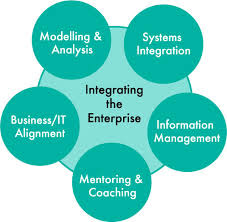There are few exceptions to the rule that you can’t have a good video without a good script. Even if the production is improvised, what gets used is judiciously chosen and edited to create the script. Here are some of the best information sources for B2B technology videos which you should furnish to the writers to help them come up with the best possible B2B technology video.
Diagrams, flow charts, timelines

The best diagrams can usually be found by flipping through PowerPoint decks and white papers, sometimes in blogs and whiteboard videos. You’re looking for a chart, diagram, or Illustration that tells a story — how something works, data relationships, the steps in a process, the jobs and departments involved.
The thing about pictures is — it takes a lot of thought to make one. That’s one reason they make a good starting point for a video. Looking at and discussing pictures also tends to lead to new visual ideas.

However, a picture is only worth a thousand words (of narration) if it captures a story pictorially. Diagrams that are themselves made up of words are more likely to require a thousand words of explanation than they are to convey a narrative that can be instantly grasped.
And you can also be sure you’re looking at a lot of thought when you see a process flow chart, a timeline, or a representation of system architecture.
Testimonials and case studies
These contain real-life examples and quotes from real people, whose descriptions of product features and benefits is more appropriate to the video medium than phrases taken from brochures and product sheets. As is amusingly explained by Derek Halpern, a perfect testimonial will present you with a character whose problem or beliefs your prospects relate to (“sounds like me!”) , and concrete results or accomplishments your prospects will relate to. By the way, punchy quotes and factual results can save you time in a short video, because they don’t have to be read aloud by the narrator — they can be displayed and read quickly on the screen.
Webinars, demos, and tutorials
Writers need to hear conversation, not generalities — live and recorded web presentations are a good place to hear it and participate. In a webinar, you hear the kinds of questions people ask, you hear tales of specific problems and solutions encountered at specific accounts. You can also get a sense of “who is in the room?” when a sales presentation takes place, and what each individual or job role cares about.
Sales and marketing strategy documents
These contain competitor information, positioning, and objection-handling scripts that can suggest framing ideas or things to include in the video script. They often describe prospects’ challenges and buyer personas that can help the writer craft the scenario and dialog.
The marketing strategy should also detail the steps that come after the video in the sales process. There’s the call to action for you, most likely. Not only that, but you may want to have the writer design the video to make that action especially attractive. In an introductory video, there’s no reason not to mention the availability of full survey results, for example, or an informative follow-up tutorial.
PowerPoint presentations and other “messaging” documents
If a salesperson complains of too many different versions of the same slide deck or the same slide, get hold of it. You’ve got a valuable resource on your hands. The many revisions will be based on how a stream of actual customers and prospects responded.
For “messaging” documents in general, try turning them into checklists. It’s easier to write a compelling story first, then check to make sure the “key” points are included somewhere, than it is to construct a story around a list of key points.
Don’t be afraid to dump too much on the writer
If you’re planning to hire a writer, don’t worry about providing too much information. You never know what might suggest a good storyline or scene.




